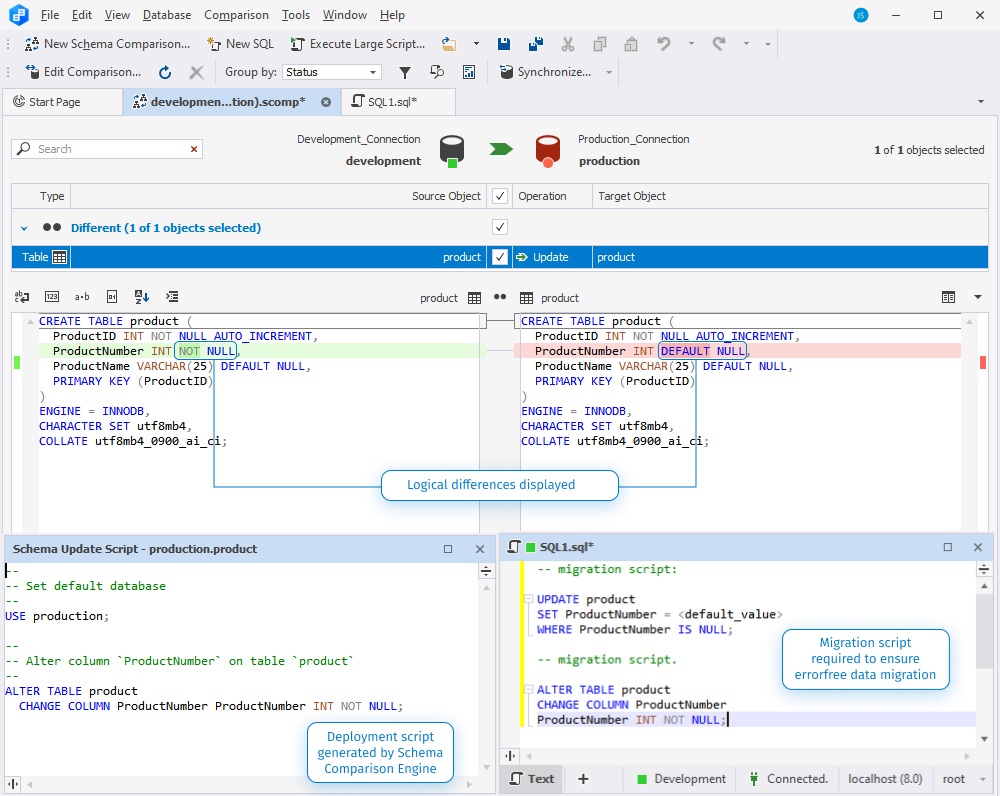Adding a NOT NULL constraint to a column
When you add a NOT NULL constraint to a column storing NULL entries without specifying a default value, the deployment process may fail because the new constraint conflicts with the existing NULL values in the column.
Solution: Instead, you need to create a migration script to update all existing NULL entries of the column with a NOT NULL value:
- Create a migration script to update NULL values and execute it
- Add a NOT NULL constraint
Note
The comparison engine of the tools doesn’t handle all cases automatically, which is why the cases mentioned above must be resolved manually.
The screenshot displays the Schema Comparison document and the scripts generated by Schema Compare Engine and a migration script, which should be created manually to perform errorless data migration.

The table provides source and target table script examples to illustrate the case:
| Source table script example | Target table script example |
|---|---|
|
|
The table provides examples of scripts generated by the Schema Comparison engine and those that should be generated manually for errorless data migration to illustrate the case:
| Script generated by the Schema Comparison engine | Script that should be generated manually for errorless data migration |
|---|---|
|
|